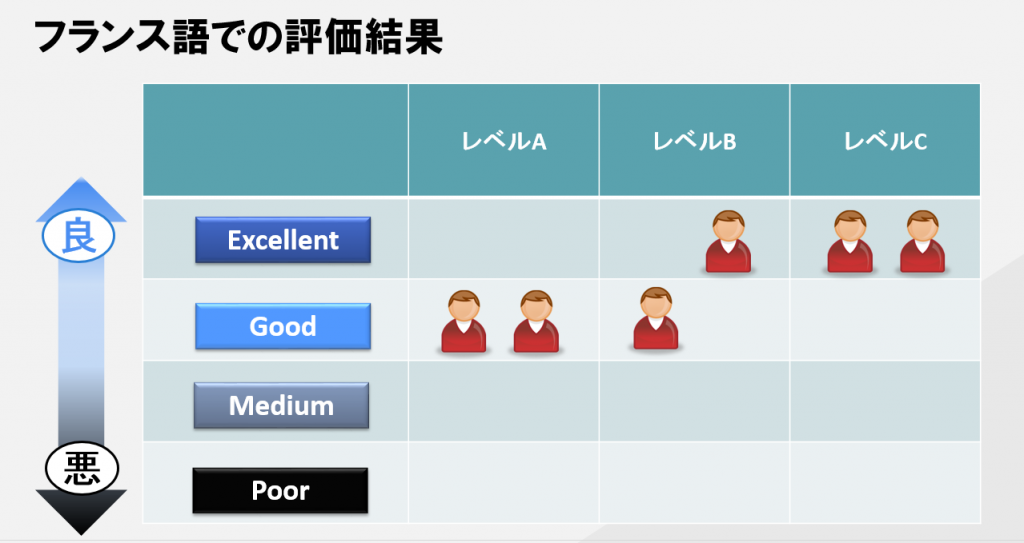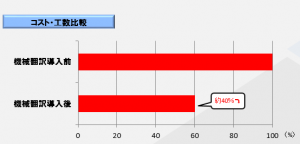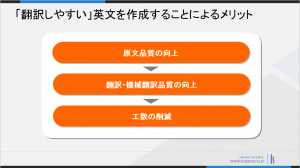As the improvement of machine translation quality becomes a topic of discussion,
we have received many inquiries about the introduction of machine translation.
From customers who have just started considering the introduction of machine translation,
we often hear comments like the ones below.
"Training and maintaining a machine translation engine seems difficult..."
"Creating a glossary for machine translation seems time-consuming..."
"I can't quite imagine how the translation flow will change with the introduction of machine translation..."
If this is your first implementation, it may seem that the hurdles to introducing machine translation are high, and you might feel anxious about it.
What kind of preparation is required before implementing machine translation, and how much effort is actually involved in its operation after implementation?
Many customers who have actually implemented machine translation have told us,
"It was surprisingly smooth to implement."
"Since we implemented it without owning the engine ourselves, the operation was easy."
"What we did in preparation for the implementation also became a trigger for improving our translation operations."
Therefore, this time, we will introduce customer feedback regarding the operation of the engine and the creation of glossaries, which are often perceived as the "hurdles" to the introduction of machine translation.
●Operation of Machine Translation Engine
As the first step towards machine translation,
we must first implement a machine translation engine.
However, when it comes to implementing a new system,
the budget for purchase costs and operational expenses, of course,
as well as the effort and costs involved in setting up the environment and maintenance, are also concerns, aren't they?
For those who find owning an engine in-house to be a bottleneck, we would like to propose,
the method of using an engine owned by a translation company.
Our company does not have its own engine,
but it is possible to output translations using the engines owned by translation companies.
Due to not owning it in-house, it can become difficult to customize freely, and there are disadvantages such as limited options for outsourcing machine translation.
However, by adopting this operational method, the barriers to implementing machine translation are significantly lowered.
In fact, we have received feedback from customers who have implemented machine translation using the engines owned by our company.
"The psychological barriers to implementation have significantly decreased."
"It is very helpful that there are no ongoing engine operation costs."
We have received such feedback.
Depending on the project and conditions, it may be better to own the engine in-house, but,
if it seems difficult to own the engine in-house,
it might be a good idea to check whether it is possible to use the machine translation engine of a translation company.
●Creating Glossaries
One key point to improve the quality of machine translation is to register an appropriate glossary.
However, if a glossary has not been accumulated through conventional translation,
it may feel like there is an increase in the new task of "creating a glossary" for the introduction of machine translation.
Many of our clients start organizing their glossaries as a result of implementing machine translation, but
we recommend starting with the glossary of key products.
Creating a glossary for all products can be time-consuming, but,
by focusing on key products,
and simply picking up frequently used proper nouns to register as a glossary,
you can improve the quality of machine translation.
First, we will create a base glossary with a small start,
and then, we will manage the glossary by adding necessary terms as needed,
which makes it possible to lower the barrier for creating the initial glossary.
By creating a glossary in this way,
"Once created, it can be used for subsequent translation projects, which is very helpful."
"By creating a glossary, the quality of human translation has also improved."
It seems that many customers are experiencing benefits like these.
Creating a glossary is not only for machine translation,
but also has a significant effect on improving quality in human translation.
In this way, working on glossary creation for machine translation often serves as a trigger for improving regular translation operations.
If it is difficult to create a glossary in-house,
you can also consider requesting a translation company to create a glossary for you.
For those who are new to machine translation,
the journey to implementation may feel long and many may feel anxious.
However, as in the example introduced this time, once you try it, you may find that it is surprisingly not that difficult, and
there are often easier ways to proceed.
At Human Science, we provide consulting services up to the implementation of machine translation, as well as operational support after the implementation.
We will propose a roadmap for implementation so that you can introduce it through a manageable process.
If you are considering implementation, even just a little,
please feel free to contact us.
If the form is not available, please send your inquiry via email to hsweb_inquiry@science.co.jp.
Thank you.
Alternatively, please feel free to contact us by phone at TEL: 03-5321-3111.



























